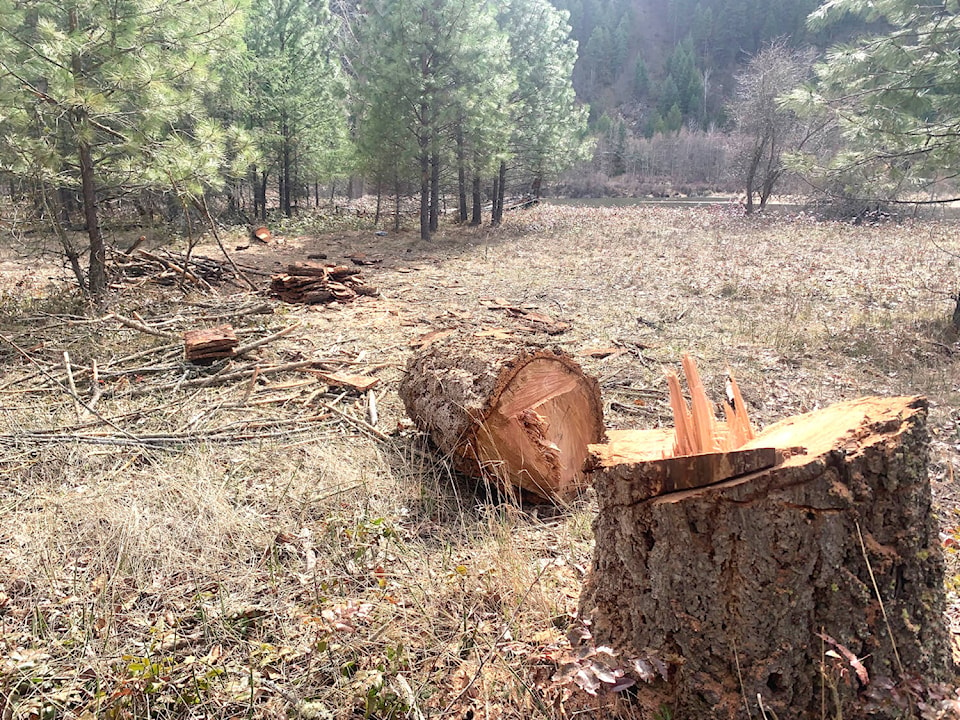Judie Steeves
I’m writing with a question for those who live in and around Grand Forks: what value do you put on the conservation of land for wildlife?
The Southern Interior Land Trust owns a number of properties in the Grand Forks area and has recently come up against at least a few individuals who do not seem to have the same regard or respect for conservation of wild lands as the supporters and donors to our volunteer-run registered charity have.
For instance, while a standing dead tree or snag in provincial forests may legally be taken for firewood, with certaIn restrictions, it may not be removed from private land owned by a land trust.
Although it is just as valuable on both properties as a home for nesting woodpeckers and other animals; for insects which provide food for birds and other creatures; and ultimately, to decay and compost on the forest floor — on privately-owned conservation lands such snags are vital wildlife habitat and are the reason the land has been purchased. They must be left to fulfill their role in that natural ecosystem.
When large trees show obvious signs of use by wildlife, they are called Wildlife Trees. They have untold value for their contribution to biodiversity. More than 80 vertebrate species of wildlife in BC and countless invertebrates depend on Wildlife Trees for some part of their life.
A large fir snag will provide valuable habitat for as many decades as it stands, after which it will eventually decay and become part of the forest’s soil. This process could take another century or more for a large tree — all the while supporting an ever-changing mix of organisms and ecological values.
A large tree’s purpose in nature is far from over with its death.
The Southern Interior Land Trust has a mandate to conserve private land for wildlife. In 1991, it purchased Edward’s Pond, which is a former oxbow of the Kettle River, for its diverse habitat, including its live and dead Wildlife Trees, grassy meadows, wetlands and ponds.
On the 50-acre property just east Grand Forks, wildlife such as woodpeckers, blue heron, eagles, bats, Western Painted Turtles, damsel flies, deer and bear thrive because the land is privately-owned by SILT for conservation.
Though its lands are privately-owned, SILT’s policy is to allow the public walk-in access to all its properties for nature- and wildlife-related recreation, provided such use is safe, legal and protects the integrity of the land. In this way, everyone can enjoy the lands’ beauty, wildlife habitats, and wildlife for all time.
At Edward’s Pond, there was a 200-year-old, 30-metre-tall dying fir tree, more than a metre wide at its base — a Wildlife Tree of immense value. And, it was well-used by wildlife, until recently, when the sound of an ATV disturbed the peace, followed by the roar of a chainsaw and the crash and boom as the large old fir hit the ground.
A neighbour had decided SILT’s Wildlife Tree would have more value in a fireplace than being left for wildlife, despite clear signage declaring the land a conservation property where no motorized vehicles were permitted.
In fact, a chainsaw bit through the closest sign as well, leaving only the stub of its post behind.
A passerby noted the sounds of the chainsaw and saw people with an ATV splitting wood and loading it into a Jeep-drawn trailer.
SILT alerted the RCMP who located a person on the neighbour’s property with the ATV and some of the wood. The person, an educator with the school district, admitted taking the tree but stated his belief the land was public — despite the signage.
Told by the Constable to confirm and seek the owner’s permission before re-entering the land, within minutes of the officer leaving, the offender returned to the felled tree with the ATV.
SILT wrote to the offender to request an apology, a donation to SILT, and to help teach local students about the value of Wildlife Trees and land conservation to the community.
There was no reply.
There was also no reply to a letter from the SILT lawyer warning prosecution could result for taking the tree.
Land trusts are not in the business of confrontation, but they have a responsibility to protect lands which the public have donated funds to purchase for conservation of wildlife habitat.
To take a large and valuable Wildlife Tree from a protected area hurts nature and hurts us all.
We are interested in how you feel our land trust, which has invested significantly in lands in the Grand Forks area, should proceed in this instance.
Please respond in a letter to the editor and/or to us at: office@siltrust.ca, or by mail to the Southern Interior Land Trust, 101-916 Ethel Street, Kelowna, B.C., V1Y 2W2.
Judie Steeves is President of the Southern Interior Land Trust
